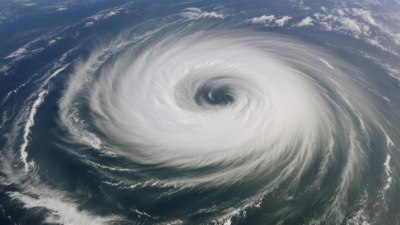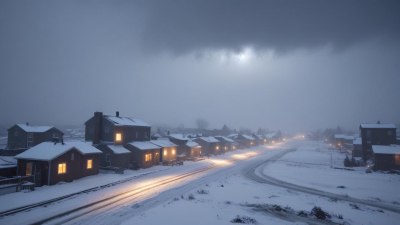Why Do Hurricanes Have a Season
Explore the reasons behind hurricane seasons and their impact on our climate and environment.

This image was created with the assistance of Freepik
Hurricanes are among the most powerful and destructive storms on the planet, often causing significant damage to infrastructure, ecosystems, and human lives. Understanding why hurricanes have a season is crucial for preparedness and mitigating risks. In this article, we will explore the climatic, oceanic, and atmospheric conditions that contribute to the formation of hurricanes, the specific temporal patterns associated with their activity, and the implications for communities in hurricane-prone areas.
What is Hurricane Season?
Hurricane season refers to the time of year when conditions are most favorable for the development and intensification of hurricanes. In the Atlantic Ocean, this season typically runs from June 1 to November 30, while in the Eastern Pacific, it spans from May 15 to November 30. These months correspond with warmer sea surface temperatures, increased humidity, and other atmospheric conditions that facilitate hurricane formation.
Key Factors Influencing Hurricane Seasons
The presence of hurricanes is shaped by a combination of various factors, including ocean temperatures, atmospheric conditions, wind patterns, and geographical location. Below are the core elements that contribute to the timing of hurricane seasons:
1. Sea Surface Temperatures
One of the most critical factors affecting hurricane formation is the temperature of the ocean water. Hurricanes generally require sea surface temperatures to be at least 26.5 degrees Celsius (about 80 degrees Fahrenheit) to form. During the summer months, the sun’s rays warm the ocean waters, creating the warm basin needed for storm development. When these conditions persist, they lead to the occurrence of multiple hurricanes during the peak months of the season.
2. Atmospheric Conditions
The atmosphere needs to provide the right conditions for hurricanes to develop. This includes adequate humidity and low vertical wind shear. Humidity is essential because it allows the storm to gain heat and energy through condensation. Low vertical wind shear means that winds at different altitudes are not drastically different in speed or direction; this stability enables hurricanes to grow vertically and develop stronger structures.
3. The Role of Wind Patterns
Wind patterns, particularly the trade winds and the jet stream, also play a significant role in hurricane seasonality. Trade winds blow from east to west and help promote the initial development of tropical systems. Conversely, the jet stream can either hinder or enhance hurricane formation depending on its position and strength. When the jet stream is located favorably, it allows for the development of lower pressure systems that can intensify into hurricanes.
4. Climate Change and Its Impact
In recent years, climate change has raised questions about how hurricane seasons may change in the future. Warmer sea surface temperatures can lead to more frequent and intense hurricanes, extending the hurricane season beyond the traditional months. Scientists continue to examine the relationship between global warming and the frequency of hurricanes as climate patterns shift.
The Importance of Understanding Hurricane Seasons
For communities residing in hurricane-prone regions, understanding hurricane seasons is vital for preparation and resilience. Awareness of the timeline and the meteorological factors involved allows individuals, governments, and organizations to plan effective responses, including evacuation routes, emergency supplies, and public safety campaigns. In recent years, the increase in the frequency and intensity of hurricanes has underscored the need for enhanced disaster preparedness and climate adaptation strategies.
Historical Perspective on Hurricane Seasons
Historical data shows significant variations in hurricane activity over decades. The National Oceanic and Atmospheric Administration (NOAA) tracks and analyzes these trends, providing valuable insight into changes in hurricane frequency and strength. This historical perspective not only helps understand the cyclical nature of hurricane seasons but also prepares us for potential anomalies and the impacts of climate variability.
Communities and Hurricane Preparedness
Effective communication and community preparedness play a critical role in minimizing the impacts of hurricanes. Public awareness campaigns, such as hurricane drills and safety preparedness workshops, are essential for equipping families with the knowledge they need to respond during a hurricane emergency. Understanding the hurricane season's timeline allows communities to monitor weather reports and take necessary precautions ahead of time, potentially saving lives and property.
Research and Advancements in Hurricane Forecasting
Advancements in meteorological research and technology have significantly improved hurricane forecasting models in recent years. With the use of satellites, radar, and computer simulations, meteorologists can better predict hurricane paths, intensities, and potential landfall areas. This information is crucial for timely warnings and can substantially increase safety measures in affected regions.
The Economic Impact of Hurricanes
The economic implications of hurricanes extend far beyond immediate destruction. During the hurricane season, communities can face significant financial challenges, including loss of income, damage to infrastructure, and high costs associated with recovery efforts. Understanding the patterns of hurricane seasons helps government agencies and businesses develop economic strategies to absorb and respond to these impacts more effectively.
Hurricanes have a season largely due to the combination of warm sea surface temperatures, favorable atmospheric conditions, and wind patterns that align during specific months of the year. As our climate continues to evolve, understanding these patterns becomes even more essential for preparedness, response, and recovery efforts. By staying informed and proactive, communities can enhance their resilience and safeguard lives and property against these powerful storms. Ongoing research and advancements in forecasting will continue to play a significant role in enhancing our understanding and ability to respond to hurricanes in the future.











